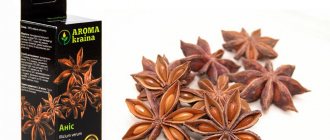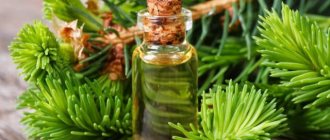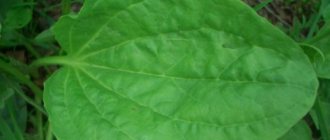general description
On forest edges and roadsides you can often see tall plants with bright star-shaped inflorescences. The perennial is a valuable honey plant, widely used for medicinal purposes, distributed throughout Russia and Europe.
St. John's wort oil is an indispensable component for the care of thin sensitive skin, and also gives luxurious radiance and strength to curls. It has a liquid consistency, a red-brown tint, and has a specific herbaceous odor that quickly dissipates. On sale you can only find base oil, which consists of a base of almond, corn, olive oil and St. John's wort extract.
It is a well-known antidepressant and will also be an excellent assistant for reviving the skin. Can be used as an independent cosmetic product; it restores fading, dehydrated dermis. Improves the condition of oily, problematic type. Widely used in masks, scrubs, lotions for comprehensive care and accelerating renewal processes. You can also add valuable oil to body and hair care products.
Methods of obtaining
One of the few oils that you can prepare yourself. There are several ways to obtain valuable cosmetic products. It is important to choose high-quality ingredients; harvested herbs are collected away from industrial zones and highways.
Recipe 1:
- Place 250 ml of refined olive, corn or sunflower oil in a water bath to heat.
- After boiling, add 20 g. freshly cut inflorescences or previously prepared dried St. John's wort flowers.
- Stirring constantly, keep on fire for half an hour.
- Then pour into a glass container and leave to infuse in a warm place for 3 days. Then you can use the oil; no additional filtering is necessary.
Recipe 2:
- Freshly cut plant inflorescences in a volume of 20–25 g. crush in a mortar.
- Add to a bottle of unrefined olive or sesame oil.
- Place in a warm place, shake vigorously every day, after a week the oil is ready for use.
How to make at home
You can not only purchase the oil at the pharmacy, but also prepare it yourself. There are several ways:
- 20 g of fresh herb flowers must be poured with 0.200 liters of olive oil, tightly closed, placed in a dark place and allowed to brew for 40 days. Then strain and pour into a convenient bottle with a lid;
- Grind 25 g of fresh flowers and put them in a liter jar, add 0.500 liters of olive oil to them, without covering them, let them stand for a week in a dark place. Then the bottle should be rolled up and placed in the sun for a month and a half. The result is the resulting red oil, which is filtered and poured into a bottle;
- 2 tbsp. l. Crush the dry mixture of St. John's wort, pour in 500 ml of heated almond oil. These steps must be performed in a glass container. Let stand for 3 weeks, shaking every day;
- 250 g of St. John's wort pour 1/2 cup of vodka and 1/2 cup of chilled boiled water. Then add 2 cups of any heated vegetable oil. Place in a dark place for 3 days. After this, pour into an enamel bowl and put it with the contents on the fire for an hour and a half. Then let the mixture brew for another 2 weeks in a cool place. When finished, strain and pour into a glass vial or bottle.
Use for diseases of the spine
Spinal diseases most often occur due to the lack of the required amount of lubrication. St. John's wort oil can in some way replace it. The cartilage located between the vertebrae dries out over the years. Before applying, you need to do an exercise: stretch from the sacrum to the legs 5 times. This facilitates the passage of oil to the intervertebral discs. After which you can start rubbing it in. Such procedures should be performed for intervertebral hernia and osteochondrosis. Effective recipe:
- collect a half-liter jar of St. John's wort flowers;
- Pour olive oil up to the lid (if not, you can use sunflower oil).
Let sit for a couple of weeks in the sun. Then squeeze out the resulting mixture and add the next portion of freshly picked flowers and leave for another 2 weeks. Store the resulting medicinal product in a cool place.
Read! In our article you can find instructions for using St. John's wort tincture in various areas.
Application in gynecology
In case of erosion, leucorrhoea, unstable menstrual cycle, it is necessary to make a cotton or gauze tampon, soak it in the product, and insert it into the vagina. Recipe:
- 3 tbsp. l. chopped dry St. John's wort;
- pour a glass of sunflower oil;
- let it brew for twenty days.
Store the resulting mixture in the refrigerator.
Or one glass of dried St. John's wort flowers, fry a little in a frying pan (so that they break quickly), crush well into powder, pour in sunflower oil. Let it brew for twelve days. Then strain, you can soak tampons in the resulting product. Put until cure.
Important! Under no circumstances should this procedure be performed during menstruation, pregnancy or lactation.
Use for a runny nose
It is best to go to the hospital and determine the cause. But for relief at first, if it is not possible to visit your doctor, you can prepare your own drops based on St. John’s wort. This method cures rhinitis in 3 days. Necessary:
- take 30 g of recently picked and not dried St. John's wort flowers;
- pour 1 cup sunflower oil.
Place in a dark place for three weeks, turning it over daily. Then decant the liquid and pour into a convenient bottle. Store in a cool place. Apply the resulting product to your nose, if necessary, 2-3 drops.
Use for gastritis
Gastritis occurs due to the use of strong medications, various types of alcoholic drinks, and smoking. Poor nutrition also has an impact: consumption of fatty, spicy foods, non-compliance with the diet. Because of this, almost everyone is exposed to this disease.
In order not to worsen your condition and prevent the disease from developing, you can prepare St. John’s wort oil at home using these recipes:
- Grind 20–30 g of herbs and pour in 500 ml of olive oil. Place in a dark place for five days. Then move to a bright place for six weeks. Take 1 tsp. 2 times a day.
- Pour 100 grams of herbs into 500 ml of olive oil and boil for half an hour. It infuses overnight. Use in the morning.
- Fill a 0.5 liter jar with the tops of the grass and pour olive oil to the top. Let it brew for 30 days. Take 1 tbsp. l. 3 times a day.
In cosmetology
It is a godsend for dry skin, and for acne - it tightens pores, relieves inflammation, prevents dehydration, cleanses and whitens the skin, as it contains many useful substances: vitamins, acids, tannins.
- For acne, it is necessary to wipe the skin after washing.
- Lotions that need to be applied several times a day will help against bruises.
- For wounds and burns, lubricate the affected areas. And if you mix 1 white of a chicken egg (preferably homemade) with a teaspoon of St. John's wort oil, you will get an excellent mask for narrowing pores.
- The product cures dandruff, strengthens hair and promotes its growth.
- If herpes occurs, you can also use oil; it speeds up the healing process.
Important! The product should be a handy remedy when traveling to the sea, as it perfectly heals sunburn. Can be used according to this recipe: add 150 grams of finely chopped St. John's wort to 0.5 liters of sea buckthorn oil, then place in a water bath for 30 minutes. Then cool, strain and store in a dark place.
Read! In our article you can learn more about how to use St. John's wort in cosmetology.
Application for vitiligo
With vitiligo, pigmentation of the skin occurs. The reasons have not been fully studied to date. But it is known that factors such as acne, stress, metabolism in the body, heredity, medication, lack of vitamin C affect the manifestation of this disease. To treat vitiligo, use the following recipe:
- Mix 100 grams of dry chopped herbs with 1 liter of olive oil.
- Place in a water bath for 3 hours, then cool and filter.
- Store in a closed bottle in a dark place.
Must be used externally. Soak a napkin or sponge in oil and apply for half an hour. To achieve better results after the procedure, you should sunbathe under ultraviolet light (increase the time gradually over the course of a month).
But even taking oil is better to combine with vitamins, eating foods that contain maximum nutrients (banana, pomegranate, raspberries, pears, apricots) and try to breathe sea air.
The result is not immediately visible. Treatment will take at least 3 months. You need to have patience and desire.
For ulcers
Due to the content of resinous substances of essential oils in the plant, a remedy based on St. John's wort that promotes phytoncidal action is an effective drug in the treatment of stomach and duodenal ulcers. It has enveloping and astringent properties. Copes well with constipation, which is typical for ulcers.
The oil is prescribed for use by a doctor, who must take into account the age and weight category of the patient. It heals wounds, erosions, destruction on the intestinal walls, and reduces the level of stomach acid production. For treatment use the following recipe:
- St. John's wort pour sunflower oil in a ratio of 1:2;
- put in a water bath for 6 hours;
- then strain
- Take 1 tablespoon 30 minutes before meals.
For osteochondrosis
For osteochondrosis, it is prescribed to rub with St. John's wort oil, as it penetrates deeply and regenerates the vertebral cartilage, giving elasticity. But to achieve a better effect, you need to do several exercises before rubbing. It is useful to hang on the horizontal bar, bend in different directions, and stretch.
- When using the oil, the treatment period is 10 days.
- Place 0.5 liters of sea buckthorn oil in a water bath for 30 minutes.
- Add 150 g chopped herbs.
Let it brew for 3 days and express. Few are ready to use.
For hemorrhoids
St. John's wort oil is used to lubricate hemorrhoids at night. Recipe:
- pour a glass of St. John's wort with sunflower oil;
- put in a water bath;
- boil for half an hour, then remove from heat and strain.
Keep refrigerated. Can be used as rectal tampons and microenemas.
Important! The oil has a positive effect in this way: it strengthens the walls of blood vessels and prevents blood from stagnating.
When treating joints
It will help reduce pain and is a substitute for synovial fluid, which joints lack with age. Oil recipe:
- finely chop 500 g of fresh St. John's wort;
- pour 500 ml of white wine and 1 liter of vegetable oil.
Let it brew for 3 days in a dark place. Then put the oil on low heat for 2 hours and let it steep for 3 weeks in a dark place. At the end of the period, strain.
A little history
St. John's wort oil was popularly called red, partly because of the rich hue of the product. But more often they meant the beneficial qualities of the product, red meant beautiful, St. John's wort helped restore the skin, give it a young, fresh look.
The herbaceous plant has long been associated with the solstice. Used as a remedy against evil spirits and dark forces. They were identified with the sun, which dispels darkness at dawn. Used as a wound-healing medicine for burns and skin inflammation. It was considered a remedy for 99 diseases and helped cleanse the entire body. The healing herb became widespread not only in Rus', but also in Ancient Greece and the Roman Empire.
The famous Persian physician Avicenna recommended applying the plant to wounds and burns. St. John's wort was included in complex herbal preparations. Girls used the decoction to cleanse their skin, get rid of redness and uneven tone.
By the way, married women infused sunny flowers in oil and used them to preserve youth and freshness of the face.
Medicinal oil of St. John's wort - beneficial properties and applications
St. John's wort oil has long established itself as one of the most effective healing agents for external use for skin diseases.
How is St. John's wort oil obtained?
The raw material for the squeeze is the herb St. John's wort. The product is obtained exclusively from flowers and foliage.
The grass itself is probably familiar to everyone with its yellow-orange flowers. The plant is not tall, reaching approximately 1 m in length.
In order to make this useful oil extract, the industry uses 2 methods: oil extraction and carbon dioxide.
What does St. John's wort oil contain?
The medicinal properties of the oil product are explained by the bioactive effects of frangulaemodinanthrol derivatives included in the plant, photodynamically active pigment and pseudohypericin, as well as the presence of plant polyphenols in the composition. It contains both essential oil and resins.
The exact composition of the oil product cannot be predicted and may vary.
The number of fatty acids must be determined by the properties of the base on which the product was infused, or which was added to impart stability.
The rest of the composition is based on a high amount of vitamin E and flavonoids, with the obligatory inclusion of tannins, microelements and macroelements.
Also includes:
- Ascorbic acid.
- Azulene.
- Kipericin.
- Provitamins.
- Vitamin A.
- Carotene.
- Vitamin R.
- Essential oil.
- Nicotinic acid.
Externally, a high-quality St. John's wort is easy to identify. Due to cypericin, the product has a red color (in macerate it has a brownish tint), and it should be completely transparent, liquid, but quite oily. It should be noted that the smell is exactly the same as that of freshly picked herbs
Beneficial features
St. John's wort oil can be used for all skin types. Perfectly nourishes, moisturizes, restores water balance, stimulates renewal processes. The complex effect on the skin is due to its unique composition, rich in active elements:
- flavonoids are powerful antioxidants, protect the skin from aggressive environmental influences, activate cell regeneration, strengthen capillary walls, improve color and structure;
- saponins have tonic properties, restore the condition of mature, tired dermis, normalize sebium synthesis, accelerate blood flow, stimulate the saturation of cells with nutrients;
- tannins improve the condition of problem skin, stop the spread of infection, neutralize redness and inflammation, even out the tone, eliminate swelling;
- esters increase the protective functions of the skin, tone, improve lymph flow, and activate renewal processes;
- fatty acids restore the hydrolipid mantle, have antibacterial properties, nourish the skin, activate healing processes, regeneration, smooth out wrinkles, regulate metabolic processes in tissues;
- tocopherols protect skin from premature aging, prevent the formation of pigmentation, and increase immune properties;
- minerals saturate tissues, help normalize metabolic processes, and are responsible for a beautiful, even tone.
St. John's wort decoction
St. John's wort decoction: 1 tbsp. Pour a spoonful of chopped dry herbs into a glass of boiling water, simmer for 10 minutes over low heat and let it brew for 2 hours under the lid.
- The decoction improves appetite, stimulates intestinal function, and suppresses the development of pathogenic microflora. Take ½ cup of the decoction 2 – 3 times a day as tea.
- To treat vitiligo, take a decoction of St. John's wort, 1 tbsp. spoon 3 times a day. At the same time, lubricate the white spots with St. John's wort oil. The course of treatment is 3 weeks, then a week break. Full course of treatment: 8 such cycles.
- Treatment with St. John's wort infusion improves the condition of the cardiovascular system: the amplitude of heart contractions increases, blood vessels are cleared of sclerotic plaques. Take 1/3 cup 3 times a day.
- For sore throat and acute pharyngitis, gargle with a decoction of St. John's wort.
- For alcoholism, take 2 tbsp. spoons of decoction in the morning and evening before meals. After 2 weeks, a persistent aversion to alcohol occurs.
- For hemorrhoids, take sitz baths with St. John's wort infusion.
- A decoction of St. John's wort has an anthelmintic effect. Take ½ glass 3 – 4 times a day.
- Rinsing with a decoction of St. John's wort strengthens the gums (gingivitis, periodontal disease), relieves inflammation (stomatitis) and eliminates bad breath.
- For allergic skin rashes, prickly heat and diathesis in children, acne, eczema and herpes zoster, wash the affected areas with a decoction of St. John's wort. It disinfects and dries the skin.
- For severe bruises, make a compress: apply gauze soaked in St. John's wort decoction to the sore spot, wrap it with plastic wrap on top and leave overnight. Thanks to the strong regenerating effect of St. John's wort, recovery will go faster.
Indications for use
St. John's wort oil is suitable for use on all skin types. Perfectly nourishes, moisturizes, restores firmness and elasticity. Reanimates the skin after scrubbing, peeling, and can be used to strengthen the muscular frame of the face. Copes perfectly with inflammation and acne, normalizes sebium synthesis.
The unique properties of St. John's wort oil allow for comprehensive care:
- removes toxins and oxidants;
- prevents the appearance of pigmentation;
- restores water-lipid balance;
- copes with dryness, flaking;
- eliminates wrinkles;
- reduces the synthesis of sebaceous secretions;
- has bactericidal properties, stops the spread of infection;
- strengthens thin capillaries, prevents the appearance of rosacea;
- refreshes color, eliminates signs of fatigue and aging skin.
Where is the best place to buy
You can purchase it at a cosmetics store, pharmacy or order online. The cost is affordable for everyone, the price for 30 ml is 150–200 rubles. It is recommended to choose products from well-known manufacturers; you also need to pay attention to the packaging.
High-quality oil is sold in a dark glass bottle with a dispenser. It is a transparent, red oily liquid with a herbal odor; the appearance of sediment or a specific aroma is characteristic of spoiled products. It is important to properly store the cosmetic product in a cool place, away from sunlight.
Note! The optimal temperature is considered to be 5–25°; after opening the bottle, the beneficial properties last for up to 12 months.
General recommendations
It will be an excellent base for creating homemade cosmetics. You can also enrich ready-made creams, emulsions, tonics, lotions and shampoos. There are general recommendations that allow you to see pronounced results in a short time:
- before use, you need to test for a possible allergic reaction;
- for dry, dehydrated skin it is recommended to use it in the form of applications or in pure form;
- to normalize oily, problematic type, can be used in masks, tonics, added to creams, ointments;
- combines with various base oils, herbs, clays, ethers;
- In order for St. John's wort oil to reveal its maximum properties, you need to heat it in a water bath to 37–39°;
- used for anti-aging massage, restoring facial contours, improving lymph flow, and coping with swelling;
- can be used throughout the year, but St. John's wort oil increases the skin's sensitivity to ultraviolet radiation, so in summer it is recommended to use it an hour before going outside.
Medicinal properties of St. John's wort oil
The medicinal product has a wide range of applications, both externally and orally, which depends on the purpose:
- Skin care cosmetics are made from a diluted 10-20% substance and added to masks, lotions and shampoos;
- for massage, applications, compresses;
- for stretch marks, injuries to the musculoskeletal system, skin inflammation and bruises, use gauze cloth soaked in the product, and for thermal and chemical burns and wounds, generously lubricate the affected area;
The oily substance includes useful substances:
- ascorbic and nicotinic acid;
- vitamins A, P, carotene;
- cypericin;
- azulene;
- ethers.
Positive effects of St. John's wort oil:
- Eliminates inflammatory processes thanks to natural substances that do not cause harm and do not have harmful consequences.
- Laboratory studies have proven antiseptic properties. The product destroys harmful microorganisms and fights fungal infections.
- Heals wounds from thermal and chemical burns. After disinfection, the oil accelerates the restoration of soft epithelium. As a result, the wounds leave virtually no scars.
- Gives an analgesic effect without side effects. Pharmaceutical drugs are available but have harmful effects.
- The antispasmodic property is used not only in the field of gastroenterology. The product gives a long-lasting effect and does not provoke addiction.
- Calms, helps normalize sleep and is used as an antidepressant.
- Accelerates the restoration of soft epithelium, relieves abrasions, swelling, resolves bruises, neutralizes swelling.
- Nourishes the skin and cells with beneficial elements.
- Eliminates rashes and irritation.
- Normalizes water and salt balance.
- The product is useful, effective and safe.
Medicinal plant oil is recommended for use:
- for spasms and pain syndromes in muscles, cramps;
- to improve blood circulation, liver, kidney, and stomach activity;
- for thermal and chemical damage to the skin, ulcers, depigmentation, periodontal disease, inflamed gums, seizures;
- for neuralgia and mental disorders;
- for stretch marks, injuries, bruises;
- for the care of delicate, oily and dry skin,
- for wounds, ulcers, scrofula, eczema, taxidermy;
- When used with motherwort, it copes with stress and helps with depression.
Methods of application
St. John's wort oil is suitable for all skin types. It is easy to create effective products that have a complex effect. Combines perfectly with various base oils, esters, and other natural ingredients. It will help cope with acne, oily shine, and gives the skin a beautiful, even tone. It also nourishes and moisturizes, launches regeneration processes, being a powerful antioxidant.
Cream for mature skin
An effective product helps smooth out wrinkles and gradually restores the contours of the oval. Normalizes the water-lipid balance, protects the skin from the effects of aggressive environmental factors. As a result of use, color improves, redness disappears, and the skin looks well-groomed and renewed.
- 30 drops of St. John's wort oil;
- 5 gr. macadamia oils;
- 5 drops of retinol.
Heat macadamia and St. John's wort oil in a water bath, remove from heat and let cool. Add retinol solution and mix well. After cleansing the skin, apply the finished product in a thin layer using stroking movements, thereby improving lymph flow.
Attention! In the morning, it is recommended to carry out the procedure an hour before going outside to avoid redness and irritation under the influence of sunlight.
Gommage
An excellent cleanser that whitens, removes dead skin cells, and stimulates blood flow. Suitable for all skin types, including sensitive ones. After use, the face looks fresh and rested.
Components:
- 5 ml St. John's wort oil;
- 5 gr. oatmeal;
- 2 gr. white clay;
- 5 gr. collecting nettles and plantain.
Grind dry herbs into powder in a coffee grinder, mix with clay and oatmeal. Add St. John's wort oil and mix well. Clean your face with cosmetic milk and moisten with water. Distribute the mixture with light massaging movements, following the massage lines. After application, leave for literally 2-3 minutes, then rinse with warm water. At the next stage, you need to use a moisturizing or mattifying cream selected according to your skin type.
Compresses
They help cope with acne and also revive the skin after the summer season. Maximum nourish, moisturize, restore the protective barrier. The cosmetic procedure is suitable for those who want to get rid of dryness and flaking and give the skin a healthy, beautiful color.
Components:
- 10 ml St. John's wort oil;
- 10 ml green tea.
Heat the oil in a water bath and combine with warm tea. Soak several cotton pads and place on cleansed skin. Keep for about half an hour, the procedure is best done in the evening before bed. To achieve a pronounced effect, it is recommended to complete a course consisting of 10–12 sessions.
Nourishing mask
For dry, dehydrated skin, it is recommended to use a home remedy that saturates the skin with active elements. Can be used throughout the year, but a particularly pronounced effect is felt in winter. After use, firmness and elasticity improve, thin capillaries are strengthened. Thanks to this effective mask, it is easy to restore tired, aging skin.
Components:
- 5 ml St. John's wort oil;
- 10 gr. cottage cheese;
- 5 gr. aloe gel.
First you need to prepare the aloe by cutting off the lower leaves, wrap it in parchment and put it in the refrigerator on the side shelf. After 2 weeks, the product is ready for use, the beneficial components are maximally activated.
Squeeze the helium mass through cheesecloth, mix with cottage cheese and nourishing oil. Mix well, the mask should be quite flexible. Clean your face, steam, spread in a thick layer, starting from the chin, moving upward. Cover the top with a damp cloth, the procedure lasts half an hour. After removing the residue with a damp sponge, there is no need to apply additional cream.
Acne mask
Helps cope with inflammation, reduces sebium synthesis, and effectively cleanses the ducts. Home care allows you to normalize cellular respiration and metabolic processes, preventing the subsequent formation of acne.
Components:
- 35 drops of St. John's wort oil;
- 5 gr. henna;
- 2-3 strawberries.
Pour hot water over henna and leave for 10 minutes. Puree the berries and add oil. Mix all ingredients, cleanse face with cosmetic milk. Apply a thick layer to the skin, avoiding the eyelids and lips, after 20 minutes rinse with warm water. If there are active pustules, spot treat the inflammation with St. John's wort oil.
Tonic for all skin types
This universal skin care product whitens pigmentation, activates blood flow, and strengthens thin capillaries. The skin is renewed, it is possible to narrow the pores and saturate the skin with valuable substances.
Components:
- 5 ml mala St. John's wort;
- 2 drops of rosemary ether;
- 5 ml apple juice;
- 30 ml of calendula decoction.
Pour water over the flowers and prepare a decoction in a water bath. Strain, add freshly squeezed juice, nutritious oil and ether. Pour into a glass bottle. Shake well before use. Apply to a cotton pad and wipe the skin after cleansing, then treat the skin with a light moisturizing fluid.
Application in cosmetology
It is widely used in cosmetology because, thanks to its soothing and regenerating properties, it has a positive effect on the skin, hair and nails.
It is recommended for use under high loads and stress. It restores and normalizes the condition of the epidermis and hair structure. As a base liquid, it is a powerful antioxidant. Often used in combination with other massage solutions.
For hair
Excellent for oily hair, and its systematic use will give your curls a dark and rich shade. Using this composition for curls will allow you to:
- eliminate dandruff;
- remove excess fat;
- strengthen their roots and structure;
- cure seborrhea;
- stimulate hair growth.
Recipes
You can easily make masks at home yourself. In order not to cause a burn to the scalp or increase its sensitivity, they should be done with a small content of this product. The choice of components and their proportions depend on the purpose of the mask.
- Strengthening . To prepare it, you need to mix 1 drop of rosemary essential oil with St. John's wort and wheat germ, 5 ml of each.
- For dandruff . Oil solutions of sesame and St. John's wort are mixed in a 1:3 ratio, as well as a couple of milligrams of tea tree or eucalyptus.
- Anti-itch . In a ratio of 3:1, solutions of St. John's wort and jojoba are mixed and 5 drops of mint ether are added.
Using massaging movements, apply the composition to the curls and scalp . Cover your head with a bath cap, leave it on for about half an hour, then wash it off with shampoo.
You can also rinse your hair with an infusion of herbs, for example, a decoction of St. John's wort inflorescences or oak bark.
For face
It is recommended to use the tincture for dry, oily and mixed dermis, as well as for sensitive and allergy-prone skin.
Effect of use:
- helps with inflammation, furunculosis and acne;
- helps narrow pores;
- softens, whitens and cleanses;
- promotes the formation of an even and beautiful tan;
- restores hydrolipid balance;
- treats neurodermatitis and allergies;
- treats sun and thermal burns, hematomas;
- helps with dilated blood vessels and capillary fragility.
This remedy is most often used by applying to problem areas using a napkin or sponge. It is not recommended to apply it in its pure form to a large surface of the skin. If desired, it can be added to finished cosmetics, store-bought creams and lotions.
How to make masks with your own hands?
If you make masks yourself, this will allow you to choose components that are ideal for your dermis. In this case, you are guaranteed to receive a natural product.
- Calming . Add two teaspoons of grape seed oil and St. John's wort to 50 mg of honey.
- To tighten pores . Mix one teaspoon of tea tree oil and the same amount of St. John's wort with egg white. You can also add a drop of litzea.
- Moisturizing . It is necessary to prepare a mixture of 2 tbsp. l. watermelon pulp, 1 tsp. oatmeal and oil liquid.
The masks are applied with light massage movements (avoiding contact with the skin around the eyes) and kept for no more than a quarter of an hour. Then, wash off with warm water and wet your face with a napkin.
For nails
Heat a mixture of 20 mg of chalked walnut kernels and coconut milk in a 1:1 ratio in combination with 10 ml of oil solution in a water bath. The resulting composition will help saturate your nails with vitamins , make them stronger and stop splitting. It must be rubbed into nails and cuticles . Keep for about half an hour.
Application for lips, eyelashes, hair
St. John's wort is often used in natural cosmetology to care for curls. Eliminates dandruff and seborrhea, relieves itching and irritation. The product is also effective for accelerating growth and strengthening the root system, as it contains ether, vitamins, and minerals.
Regular use makes your hair thick, voluminous and gives it a beautiful shine. Can be used in masks, for scalp massage, and also in sprays to combat hair loss. It should not be added to shampoo; nourishing oil does not cope with impurities.
Not recommended for use on eyelashes and lips. The ester content can lead to redness, irritation, and swelling. If it gets into the eyes, it may cause lacrimation and a burning sensation. For lips it is used for dryness, cracks, and also for the appearance of herpes. The oil has bactericidal properties, restores delicate thin skin, protecting it from damage.
Internal use
The oil has anti-inflammatory, regenerating, antispasmodic, analgesic, sedative, decongestant, and antihistamine properties. Oral administration is prescribed for allergies, insomnia, stress, anxiety, inflammatory processes, ulcers, gastritis. In each case, therapy is selected individually and is carried out under the supervision of a doctor.
On average, the course lasts about 2-3 weeks, a teaspoon of oil is prescribed an hour before meals, or 2 hours after. Repeat twice a day, this is a general treatment regimen, but it is worth taking into account the characteristics of the body and possible contraindications.
Precautionary measures:
- individual intolerance;
- hypertension;
- pathologies of the excretory system;
- increased body temperature, fever.
How to use St. John's wort oil for treatment
For external use, applications, rubbing, and baths are used. For example, for peeling feet: 2 liters of liquid will require 100 ml of oil substance. Carry out procedures up to three times a week.
Applications are used for wounds, swelling, varicose veins, and hemorrhoids. At first every other day for a month. Then every day for two weeks.
General method of oral administration: twice a day, 1 tsp. one hour before eating or 2 hours later. Duration of treatment is 14 days.
For the scalp
The oil is also rubbed into the dermis of the head. Then put on polyethylene for half an hour. This is how the greenhouse effect occurs. Such procedures strengthen hair, improve structure, and eliminate oiliness.
The product has virtually no restrictions, but is not recommended for:
- problems with potency and urticaria;
- high blood pressure;
- jade;
- high temperature;
- individual immunity.
St. John's wort has a powerful biological effect, so exceeding the consumption rate is not recommended. In relation to the gastrointestinal system, there may be an opposite effect, exacerbation of peptic ulcers and gastritis.
The combination of St. John's wort with lemon balm and mint can be difficult for the gastrointestinal system, liver and kidneys.
Use for musculoskeletal disorders
In the treatment of the spine, St. John's wort oil is used for massage and compresses on sore areas. In a dry glass container you should:
- pour 150 g of dry raw materials;
- and pour 0.5 liters of vegetable oil.
Place the container on steam and keep for 30 minutes. Then the product should stand for three days, after which it is filtered and used before bed in the form of compresses for 14 days.
St. John's wort has an analgesic and anti-inflammatory effect for vertebral hernia. The combination of St. John's wort and birch oil gives a noticeable effect during massage. To prepare oil from birch leaves, they must be collected early in the spring and poured with any oil consistency.
Use St. John's wort for joints according to the following recipe, for which mix:
- 1 part herb;
- 2 parts olive oil.
The product should stand for a month.
St. John's wort helps with joint pain in the form of an ointment. First you need to evaporate the St. John's wort extract, then mix it with Vaseline or baby cream. Leave for 7 days. You can also prepare an ointment for rubbing from the juice of the plant.
Recipe for preparing St. John's wort oil for osteochondrosis: add 4 parts butter to 1 part juice.
Compress recipe:
- 3 parts St. John's wort tincture;
- 2 parts bee honey;
- 1 part agave juice.
Before use, the composition is heated and applied to the affected area on both sides of the spinal column for 45 minutes. The duration of the procedures is 7 days. As a result, the product eliminates pain and relaxes muscle spasms.
St. John's wort oil for arthrosis is rubbed with massaging movements into the sore spot.
Use for sinusitis, sore throat and ARVI
Treatment for sinusitis with St. John's wort oil will bring a noticeable effect. To prepare the product you will need flowers and grass leaves. You can prepare them yourself or purchase a finished product from a pharmacy chain.
There are several options for preparing a medicinal product from St. John's wort in sunflower oil:
- Pour 0.5 liters of oil substance into 250 g of raw materials. Keep the mixture for 21 days in a warm place, then strain when finished.
- Pour 200 g of fresh raw materials into a 1 liter glass container and pour 300 ml of oil. Keep the product for 3 months. In this case, you should alternate 10 days under ultraviolet rays, 10 in a dark room. Place 3-5 drops into each part of the nose or combine with Vaseline and lubricate the nasal passages.
INTERESTING fact: Beneficial properties of hyssop herb and contraindications
To treat adenoids with St. John's wort, put the oil in your mouth up to 7 times a day, dissolve, and spit out the first amount.
St. John's wort oil for a runny nose in children is a very effective remedy. Recipe: 1.5 tbsp. l. Pour the flowers with vegetable oil and leave for 21 days. Place 1-2 drops into children's noses.
St. John's wort oil resists viruses for colds. For this purpose, the nostrils should be lubricated with the product as a preventive measure.
Simple ways to treat complex diseases:
Horseradish is the only plant that can draw salt through the pores of the skin. Do it - you won't regret it! Horseradish leaves will help get rid of all the salt that has accumulated in the body and can lead to painful salt deposits...Check... Read more
Never give an antibiotic BEFORE you get a blood test with a leukemia formula. Remember, write to yourself somewhere in a visible place!!! INCREASED leukocytes, ESR, lymphocytes - VIRUS. INCREASED leukocytes, ESR, segmented and rod neutrophils... Read more
What 1 glass of this drink will do to your liver can be called a real miracle! If the liver is overloaded or does not work well, we immediately feel it. Weakness, lack of energy, dizziness, nausea, pain in the right hypochondrium, problems with food... Read more
Dandelion is the elixir of life, and what a medicine!!! The medicinal dandelion is an unpretentious plant, but contains a good half of the chemical elements of the periodic table. Sodium, potassium, manganese, magnesium, and... Read more
Seeds that repair tendons and reduce joint pain. We treat osteoporosis and osteoarthritis. Osteoarthritis of the knee is a type of degenerative joint disease or arthritis that is localized in the knee and can cause pain and di... Read more
The use of St. John's wort oil for the digestive system
The oily substance of St. John's wort has a specific aroma and taste. Therefore, when used internally, the following symptoms may appear: belching, bitterness in the mouth.
For the treatment of gastritis, gastric and duodenal ulcers, it is good to use an oil consistency with an infusion of celandine. This method acts antiseptically, destroys pathogens, and protects the mucous membrane from degenerative processes.
Directions for use:
- take 1 tbsp. l. on an empty stomach, treatment duration is 40 days;
- use 1 tbsp. l. oil substance one hour before meals for 20 days, break for 10 days, then the course of treatment continues.
St. John's wort oil for the pancreas can be drunk only for chronic inflammation: take 1 tsp. twice during the day. In the acute stage of the disease, any oil products are not allowed.
Use of the product for skin problems
St. John's wort oil is used to lubricate the sore spot when treating burns. But before the procedure, you should disinfect it with celandine tincture: for 100 g of plant juice you will need 200 g of vodka. Leave the product for 14 days
In case of allergies, wet your hands in warm whey with the addition of yellow milk juice. Heat the liquid and put a glass of fresh raw materials into it. Dip your hands into a hot solution, then dry and spread with an oil substance from St. John's wort, which contains a large amount of imanin, which has a disinfecting effect. After 14 days, the skin will be as good as new.
St. John's wort oil creates a protective film on the skin for atopic dermatitis. Preparation of the product:
- 100 g of plant inflorescences;
- 500 ml vegetable oil.
The composition should be exposed to ultraviolet rays for 14 days. When infused, the oil receives a rich red color from exposure to the sun. This hyperecin is converted into flavonoids, which have antioxidant and sedative effects. To prepare the ointment, St. John's wort is boiled with lard over steam.
St. John's wort oil for psoriasis is combined for treatment with another oil consistency of linseed and birch:
- 10 g flaxseed and St. John's wort;
- 5 g birch.
How to take St. John's wort for vitiligo: to 1 tsp. pour 200 g of hot liquid of raw materials, let the product sit for half an hour. Take 1 tbsp orally every day three times. l. After 3 weeks there should be a break for 7 days. The duration of treatment is 8 courses. At the same time, gauze soaked in St. John's wort oil is applied to the sore areas for 40 minutes. Duration of therapy is 40 days.
If the bruised area is bothering you, boil a little St. John's wort in 500 ml of water, cool, moisten gauze, wrap in polyethylene and leave overnight.
For varicose veins and hemorrhoids
St. John's wort for varicose veins increases the rate of bleeding and restores blood vessels.
Recipe:
- 1 part herb;
- 10 parts of any oil.
Leave the mixture on for 2 weeks and treat damaged areas.
INTERESTING fact: Treatment of psoriasis with grease, how to apply it at home
When exacerbating hemorrhoids, the following oil substances in the composition will help:
- 1 tbsp. l. St. John's wort;
- 3 drops of chamomile;
- 10 drops of cypress.
Use of oil in gynecology
Due to the high content of bioactive elements, the plant is recommended for use in gynecology for the following pathologies:
- adhesions;
- vaginitis and colpitis;
- cervical erosion;
- amenorrhea;
- severe bleeding;
- pain during menstruation;
- infertility.
For example, if irritation or erosion occurs in the vagina, insert a cotton swab soaked in an oily substance overnight.
Advantages and disadvantages
The natural product contains valuable elements that nourish, moisturize the skin, giving it a fresh, well-groomed appearance. It is worth considering the features, indications, and contraindications for use.
Benefit:
- nourishes, moisturizes the skin, stops the spread of infection, has a rejuvenating effect;
- suitable for all types of dermis - fading, mature, dry, oily, problematic;
- affordable cost, as well as natural composition, will allow everyone to experience the effect of transformation;
- you can enrich ready-made products, create homemade cosmetics based on them, or use them as an independent product;
- oil is used throughout the year;
- effective for caring for face, body and hair.
Harm:
- Before use, you need to test the composition;
- It is phototoxic and should not be used when exposed to sunlight.
Reviews from people
Many have already experienced the effects of the oil, appreciating its cosmetic properties.
The user writes that she used it to restore oily, dehydrated skin.
The review states that the oil is natural and contains no synthetic additives; quality certificates can be found on the manufacturer’s website.
A participant describes using St. John's wort oil in combination with tea tree ether to treat oily skin.
Other reviews can be found at this link










